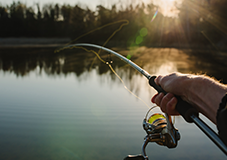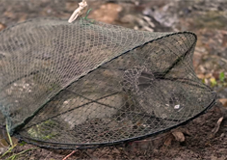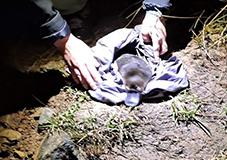Urban Platypus, Fishing and River Pollution
Platypus in Western Sydney: Protecting an Iconic Species
Did you know that platypuses inhabit the rivers and creeks of Western Sydney? Research by Western Sydney University, led by Dr Michelle Ryan in partnership with local communities and government, has identified several platypus hotspots in the Hawkesbury-Nepean catchment area in low numbers. Platypus in New South Wales are not listed as threatened due to limited baseline data, especially for Western Sydney.
The Hawkesbury-Nepean Platypus Project has been working for several years to change this, using the platypus as a flagship species to inspire our community to reconnect with and care for our rivers, with the team adding 65 new known locations of platypus to the scientific database of platypus in Greater Western Sydney (an increase from 2 records since the 1990s).
Destructive Fishing Practices on our Platypus
Platypus breathe air and can only be underwater for three or four minutes, coming up frequently. They use waterways to forage up to 14 hours per night for their food and use riverbanks for their burrows. Fishing lines, illegal and outdated fishing traps and humans can cause platypus mortality. Our records show nine platypuses have drowned in these traps over the past few years.
Unfortunately, the local platypus population faces several significant threats! Fishing practices are one major cause:
- Illegal Fishing Traps: Illegal traps, such as closed-top yabby and opera house traps, are deadly to platypuses. If you see them, remove them or report them to OzFish, your local Council, or the Hawkesbury Nepean Platypus Program. Western Sydney University's project team have been working to communicate and raise awareness about the deadly impacts of these traps.
- Disposed Fishing Waste: Always take fishing line, hooks, and other waste with you and dispose of it properly in the bin to keep wildlife safe. Western Sydney University's TAngler Bins educational awareness program, installed between 2019 and 2022 at Yarramundi Reserve, Pughs Lagoon, and Macquarie Park along Hawkesbury-Nepean, collected and safely disposed of over 2.5 km of fishing line, preventing harm to local wildlife.
If you find an injured or stuck platypus, call WIRES immediately. Don't pick them up - you might get stung by their spurs! Reach out to WIRES by calling the dedicated Rescue Office (24/7) on 1300 094 737.
Other threats to our platypus include:
- Poor Water Quality: Ongoing development across Greater Western Sydney has increased sedimentation in waterways which impacts their ability to forage.
- Damaged Riparian Zones: The loss or degradation of vegetation along riverbanks reduces habitat quality and affects their burrow sites.
- Pollution and Litter: Heavy metals, urban runoff, and improperly discarded items pose serious health risks.
- Cats, dogs and cars: Humans (and our pets) are also a great risk to platypus as they move between the waterways.
- Entanglement Hazards: Elastic bands and hair ties (usually from nearby sporting fields) which can cause fatal strangulation.
What can you do to help platypus in your local area?
- Remove incorrectly discarded fishing waste and report Illegal Fishing Trap: If you see them or are unsure, remove them or report them to OzFish, your local Council, or the Hawkesbury Nepean Platypus Program.
- Keep biodiversity safe: Watch out for platypus while driving at night and keep your pets inside or on the leash.
- Join a Local Bushcare or Landcare Group: Get involved with groups like our Cattai Hills Environment Network's Platypus Landcare Group to improve your local waterways, clean up creeks and improve habitat quality.
- Manage your private property for biodiversity: Opportunities to work with the HNWA are forthcoming, including having funded work undertaken on your private property (within select areas and creeks) to improve instream connectivity, riparian health and the habitat for our urban platypus. Join the Land for Wildlife Scheme now to commit and for resources on how!
By working together, we can make Western Sydney's rivers safe for our biodiversity.

Find a location near you to dispose of your old or unwanted fishing line and tackle to keep it out of our waterways
Read More
Hand in your illegal Opera House yabby traps and recycle them into new useful products for fishers with OzFish
Read More
Recreational fishing is a popular Aussie activity but many people accidentally kill platypus. Learn why and what you can do to help
Read MoreMobile options:

